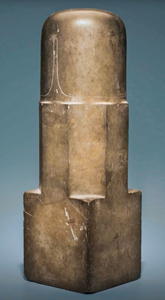
Bhimgaga Siva Temple at
Ahichchhatra ("region of Nagas")


The remains of Bhimgaga Siva Temple sit within the ruins of the fortified ramparts of Ahichchhatra, the former capital city of Draupadi's kingdom of Northern Panchala, which is mentioned in the Mahabharata, ("Great Epic of the Bharata Dynasty"), one of the two Sanskrit epic poems of ancient India.
The city is located in Bareilly district, Uttar Pradesh, northern India, situated on the Uttarapatha of the Silk Road of Northern India, which connected the great cities of ancient India, Taxila, Mathura, and Pataliputra. Because Buddha is said to have visited here, Ahichchhatra was an important place of pilgrimage. The city was continuously inhabited until 1100 CE., having been inhabited by several coexisting cultures including Hindu, Buddhist, Jain, and Mogul. By 1000 BC, the city reached at least 40 hectares (99 acres) of area.
Excavations at this longest surviving site in India, began in 1871 by Sir Alexander Cunningham, and later in 1940, by the Archaeological Society of India. The earliest cultural artifacts found at this site are those belonging to the Ochre-Coluoured Pottery culture which date from the late Vedic period, 2000 BCE. These excavations also uncovered a giant ancient temple, the Bhimgaga. The base of the, now disappeared, temple is a pyramid, c. 46 meters (150 feet) square, by 22 meters (72 feet) high consisting of 4 or 5 terraces. This temple is India's own Pyramid. With such massive brick ruins, one can only imagine how gigantic the temple would have been in its days (speculatively reconstructed, here, in the CG model). The temple edifice was destroyed either by earthquake or by the "iconoclastic tendencies" of the 12th century Jihadists; only the temple's broken Siva linga remains at the pyramid's top level. Subsequently, the site fell into oblivion remaining virtually unknown by the local population until Sir Cunningham's archaeology. Many Hindu sculptures found at the site are now in museums, including the British Museum.
Elevation is c.240 meters (879 feet) above sea level.
Materials: Minimal information has been published about the construction of the Bhimgaga Temple. In photos published online showing the "reconstruction" of the pyramid carried out in the 20th century, the materials of the walls appear to be fired clay bricks set with an unknown mortar.
Data for this CG model:
1. Kramrisch, Stella, 1946; The Hindu Temple, Vols. i & II, University of Calcutta, India, 1946. ( https://archive.org/details/in.ernet.dli.2015.282158
-and-
https://archive.org/details/in.ernet.dli.2015.40420 )
2. Sravanthi, S.; Malik, Javed; Vikarna, Bhutan, 2012; Ground Penetrating Radar Investigations at Ahichhatra: An attempt to identify buried subsurface structures; 2012 14th International Conference on Ground Penetrating Radar (GPR), June 4-8, 2012, Shanghai, China.





